Dear Mike,
Later in the year when it gets below 40 degrees out I run the camper off a generator. A small ceramic heater and the furnace keeps it nice and warm. Problem starts when the generator runs out. Something sucks the life out of my batteries, presumably the furnace. Checked the battery, no problems. Even bought a new deep cycle lead-acid battery. Still only lasts about 45 minutes running the furnace off the battery. I bought a gauge and hooked it to the battery and unplugged the generator and watched it go from 100 percent to 90 to 80 in 5 minutes. I know this shouldn’t happen when “boondocking” but it does. Any help would be appreciated. —Frank
From Glen Thompson:
You mention a small ceramic heater. Is the ceramic heater plugged into the inverter? That would kill the battery in a very short time.
From Mike Sokol:
Good point. I had first assumed he was running the small space heater on shore power or generator since most pop-up campers I’ve seen don’t have inverters to make 120-volts AC from the battery. But maybe he does have an inverter that will power a space heater or microwave from the battery.
Even at a low 600-Watt setting a portable space heater would drain a single 100 Amp-hour battery down to 50% of its capacity in 30 minutes or so. That’s because a 100 Amp-hour battery only has about 1,200 Watt-hours of power. And if you limit the discharge down to 50% of capacity for best life of a lead-acid battery, that’s only 600 Watt-hours of power available from a fully charged 100 amp-hour FLA battery while boondocking. So you can see that if your battery only has 600 watt-hours of usable power, a 600-Watt space heater will use it all up in an hour of running. Turn the space heater on the high 1,200-Watt setting, and you’ll only be able to run it for 1/2 hour. That’s because 600 / 1200 = 1/2 and 1/2 of 60 minutes is 30 minutes of run time.
Battery Bank Accounts
Okay, I think it’s time I show you my internal thought process of charging and discharging batteries in RVs. While you may have read some of my articles about converting 12-volt amperage to 120-volt amperage and back, there’s an even easier way to calculate how long a battery will last powering an appliance. So if we keep everything in watts (the amount of wattage something draws) and hours (how long that something is running), it’s much easier to understand why even a small electric space heater can drain a big battery pretty rapidly.
A storage battery is just like a bank account. But instead of depositing and withdrawing money, you’re depositing and withdrawing watt-hours of power in and out of the battery. So a few quick definitions and we’re off to keeping our battery bank out of the red and not bouncing checks.
What’s an Amp-hr (Ah)?
The main thing you really need to understand is that a 100 Amp-hour battery can provide up to 100 amps of current for 1 hour. (Get it? Amp-hours?) Now 100 amps times 12 volts is equal to 1,200 watts, which tells us that a standard 12-volt house battery listed as 100 amp-hours of capacity is really 1,200 Watt-hours of capacity.
But we really don’t want to empty our lead-acid battery down to 0 Watt-hours since that shortens its service life considerably. That’s why you’ll hear not to discharge a lead-acid battery to below 50% of its capacity. That tells us that we only have 600 watt-hours in the account to work with. Okay, we’re done with the main calculations for now.
Be aware that some modern AGM batteries are rated for discharge down to 20% SoC (State of Charge), while Lithium batteries can usually be discharged down to 0% SoC without damage. But that’s for another article…
Writing Those Checks
Yes, your mom and dad probably told you not to write checks you can’t cover with money in your account, and the same is true for your battery. Every time you hook up to shore power or run a generator you’re making a watt-hour deposit in your RV’s battery.
But instead of a bank account that will allow you to deposit as much money as you want, your RV battery will only let you deposit a total of 1200 watt-hours, which is just 600 watt-hours of energy above its lowest 50% capacity. So you have 600 watt-hours of energy to work with in your battery bank account.
Making a Withdrawal
Now it’s pretty simple to calculate just how many Watt-hours you’ll be withdrawing from your battery bank account by looking at the listed wattage for each appliance and figuring out how long you’re running it.
So if your daughter has a 1,200-watt hair dryer and she runs it for 10 minutes, that’s 1/6 of an hour at 1,200 watts, and 1,200 watts times 1/6 hours = 200 watt-hours of the 600 watt-hours you have in your battery. Yes, you can calculate that 10 minutes of running a 1,200-watt hair dryer just used 200/600 or 1/3 of your available battery capacity. Yikes.
Bigger / Longer Withdrawals
The same goes for a space heater. On the low setting it’s probably drawing something like 600 Watts. So if you run it for an hour, that works out to a withdrawal of 600 Watts times 1 hour = 600 Watt-hours. Yikes, again. Yes, that little ceramic space heater set on low (600 Watts) will use up all of the 600 watt-hours of power you have in the battery in about an hour of run time.
Now get an even larger space heater and set it to 1,200 Watts, and just need to divide 600 Watt-hours / 1,200 Watts and you’ll see that an electric space heater on high (1,200 Watts) will deplete your battery bank account in 1/2 hour or 30 minutes. Just like your kids at college using the ATM card to buy Starbucks lattes for their friends, you’ll soon drain out all your available cash (or Watts) and be dead broke (have a dead battery).
Making Deposits
Of course, all is not lost since, like your bank account, you just have to put in more money. That’s what the generator or shore power does through your RV’s converter. Let’s assume you have an FLA (Flooded Lead Acid) battery bank that can accept a maximum of 20 amps of charging current. And you have a small converter with a 20-Amp charging output that’s depositing power into your battery bank at a rate of around 240 Watts (because 12 Volts times 20 Amperes = 240 Watts), so they should be able to put back 600 Wh of energy into your battery in several hours (600 / 240 = 2.5 hours). After that first two hours, lead-acid batteries should slow down to a trickle charge of maybe 2 Amps or 20 watts.
If they’re a modern 3-stage charger they’ll then go into battery tender / maintenance mode, which monitors your battery bank account and deposits a few watts here and there to make up for small withdrawals like your RV’s tank monitoring systems and such. And because it’s actually looking at the balance in the battery bank account, it never over-deposits (over-charges) the battery, which can cause even more damage such as boiling out the water, warping the plates, etc.
More on Lithium and AGM battery charging characteristics later. 😁
Hope this helps you understand battery bank accounts…
OK, everyone. Remember that electricity is a useful and powerful force, so we all need to pay attention to safety precautions while using it.
Let’s play safe out there - Mike

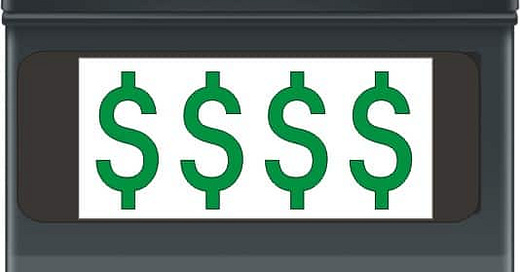



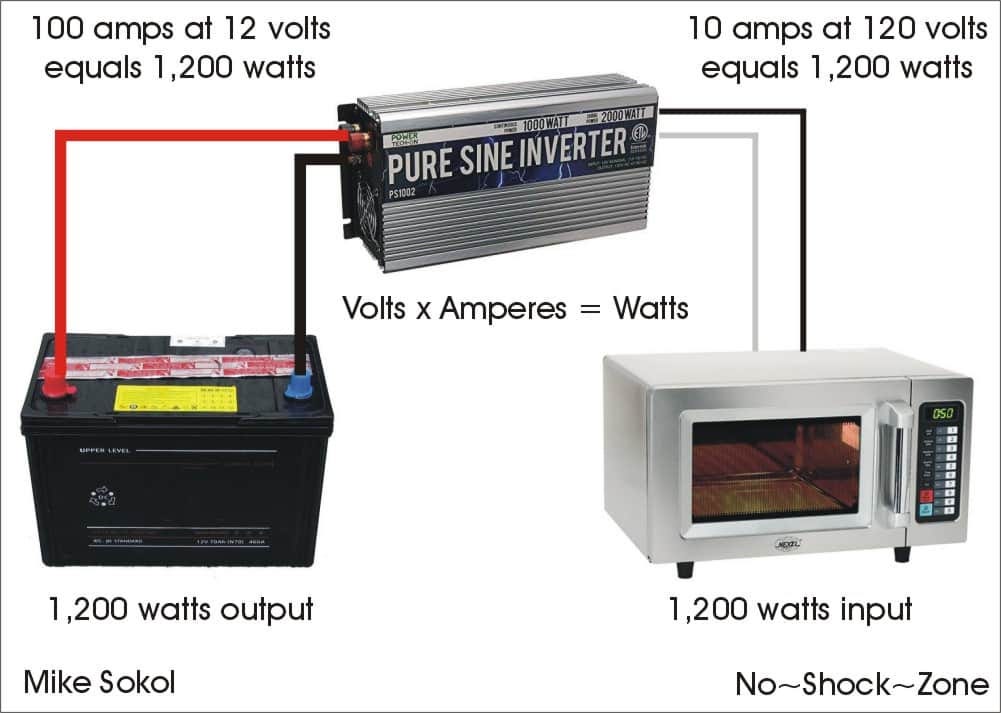

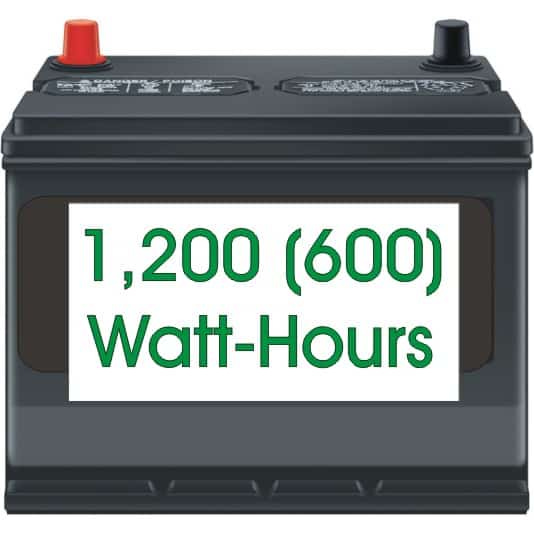

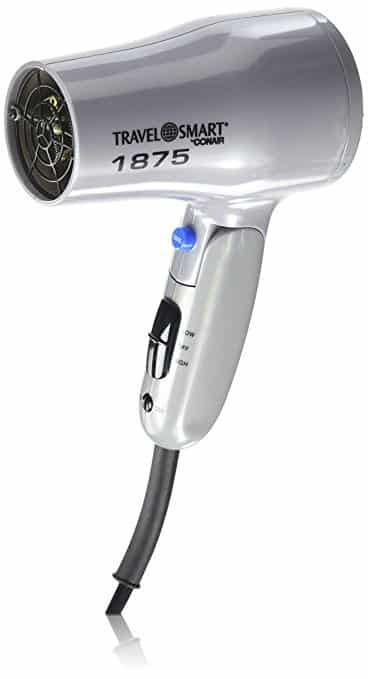
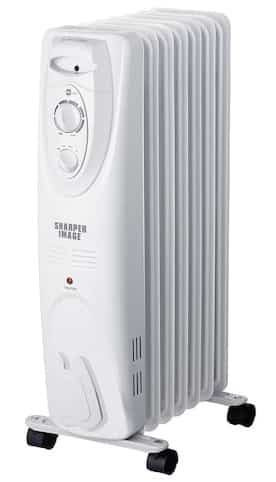
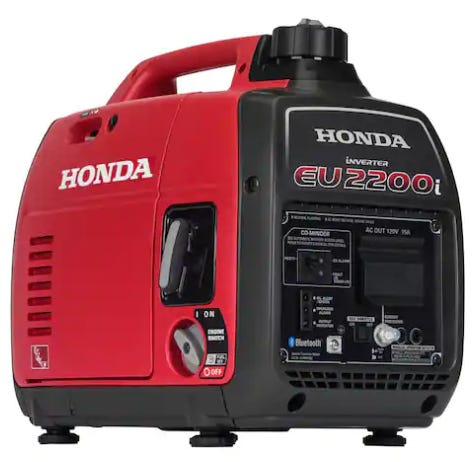
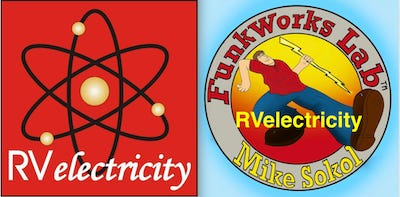
I think it is important to note that when using lead acid batteries and a multi-stage converter or battery charger, typically lead-acid batteries are first bulk charged to 80-percent, around 14.4 volts. The last 20-percent stage of charging a lead-acid battery to 100-percent is the absorption phase that can take as long and often longer than the bulk charging time since it occurs at a lower voltage of around 13.6 volts to avoid excessive battery heat and water loss from the electrolyte. I know that when we are dry camping, and we are not full-timers, we cycle our lead-batteries between however low they go in one- or two-days’ time and 80-percent. It is unlikely we ever get down to 20-percent given the high drain items we run from time-to-time such that we are cycling our batteries between something greater than zero and 80-percent charge as I shutdown the generator shortly after the bulk charging phase or 80-percent of capacity. It makes little sense to run a generator, even at idle, only pushing a few amps to get a battery to-100-percent unless the generator is being run to do more than recharge batteries. The batteries can later be fully recharged when we plug into shore power at an RV park or at home. In the real world, using a lead-acid battery between 50- and 100-percent is somewhat of a fallacy, just as using a lithium battery between zero and 100-percent. Our batteries are there to care and comfort us, more than we are there to nurse them.
I wonder how many of the folks who don’t understand electricity well enough to have a grasp for Watts and Watt-hours will have the interest / attention span to read through an intermediate level article like this? I love the article and bank account analogy. It’s brilliant! But I think there is another concept that would really help. Mike, you’re written before (multiple times I think) about the difference between the amount of energy stored per unit weight and volume between a lead-acid and an LFP Battery and propane. A 20 lb tank of propane holds ~120 kW hours of energy compared to a measly 1kW-hr in a standard 12V lead-acid or LFP battery. So, a tank of propane will heat your RV for days rather than minutes! That should get someone’s attention real quick! It’s also head turning to realize that a bank of LFP batteries is good for ~3 times more energy than a bank of lead acid batteries of the same weight. And, even more importantly, for the same amount of stored energy, a bank of LFP batteries wil occupy less than 1/3 the volume of a bank of lead-acid batteries. In bank account terms, these days, a good AGM battery capable of supplying 100A-hr costs about $200 -$300 and a mid-grade 100 A-hr LFP battery costs $300-$500. Even at the California high price of $5/ gallon, a 20 lb tank of propane costs about $20-$25 to refill. So, the cost of 10 - 20 tanks of propane is equivalent to the cost of a lead-acid or a LFP battery, respectively. Even with their lower energy storage density, if you go on a lot of camping trips, lead acid and LFP batteries are cheaper by a lot over the long run to use to heat your RV than propane (inconvenience aside)! We are willing to pay a lot for the ability to heat our RV for days rather than minutes!